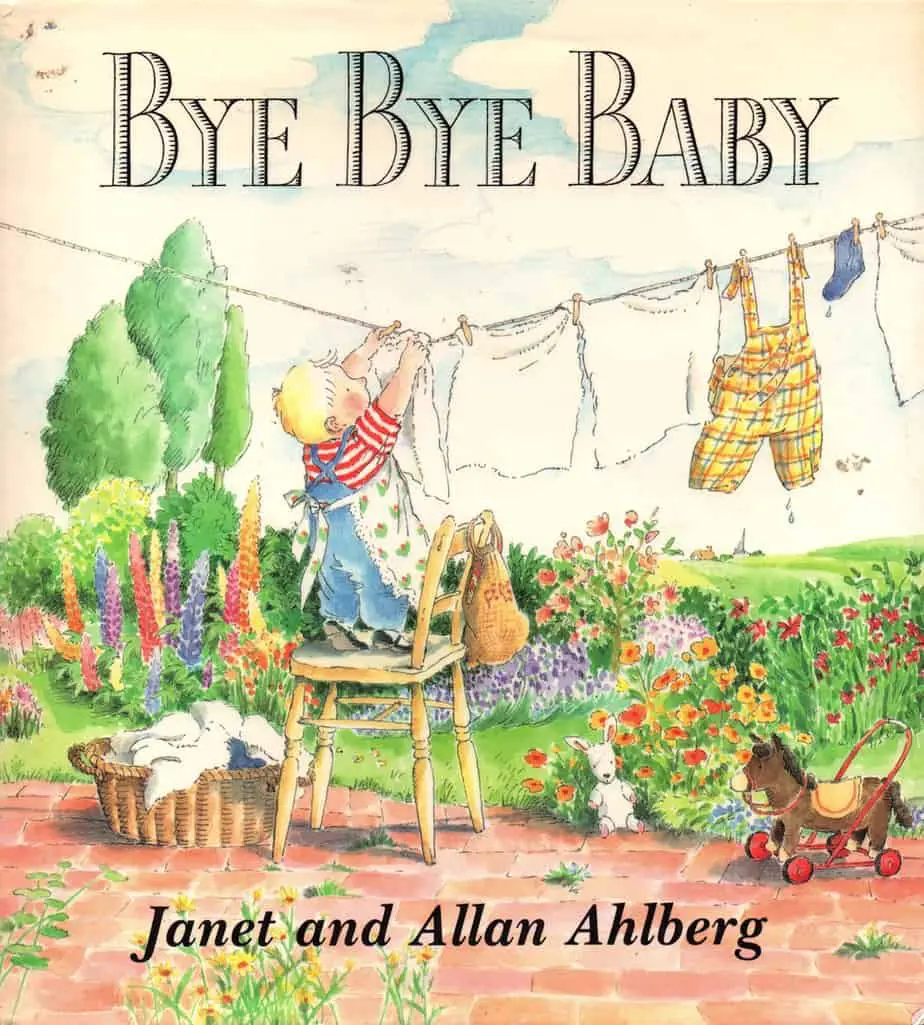This month I wrote a post on Teaching Kids How To Structure A Story. Today I continue with a selection of mentor texts to help kids see how it works. Let’s look closely at a picture book called Bye Bye Baby by husband and wife team Janet and Allan Ahlberg. I’ve chosen Bye Bye Baby to contrast with yesterday’s completely un-ironic take on the classic Cinderella/journey/home-away-home/mythic structure story utilised by Emma Chichester Clark in Piper.
STORY STRUCTURE OF BYE BYE BABY
From the title you might mistake this for one of those simple picture books for literal actual babies, where the baby in the book says ‘Bye bye!’ to various people from the pram, or to animals at the zoo etc. That’s not what this is. Bye Bye Baby is a slightly weird story more in the vein of Boss Baby by Marla Frazee, in that you’ve got a baby who is a grown person in a baby bod. The narrative voice is knowing, telling us that this baby has no one to care for him, which was ‘very sad’. Fairytales start like this. We get a pathetic figure and we empathise with them due to their great misfortune.
The ironic tone is set from the ‘log line’: A sad tale with a happy ending. When we are told the story is sad, we know it’s not taking itself seriously. The log line also ruins the ending, but then, the ending wasn’t really ruined because the fairytale nature of this story tells us from the get-go that this tale will end happily.
The title ‘Bye Bye Baby’ must be a riff on ‘By and by he met a…’, which takes its structure from folk tales such as Chicken Licken, and utilised most famously by Frank L. Baum in The Wonderful Wizard of Oz.
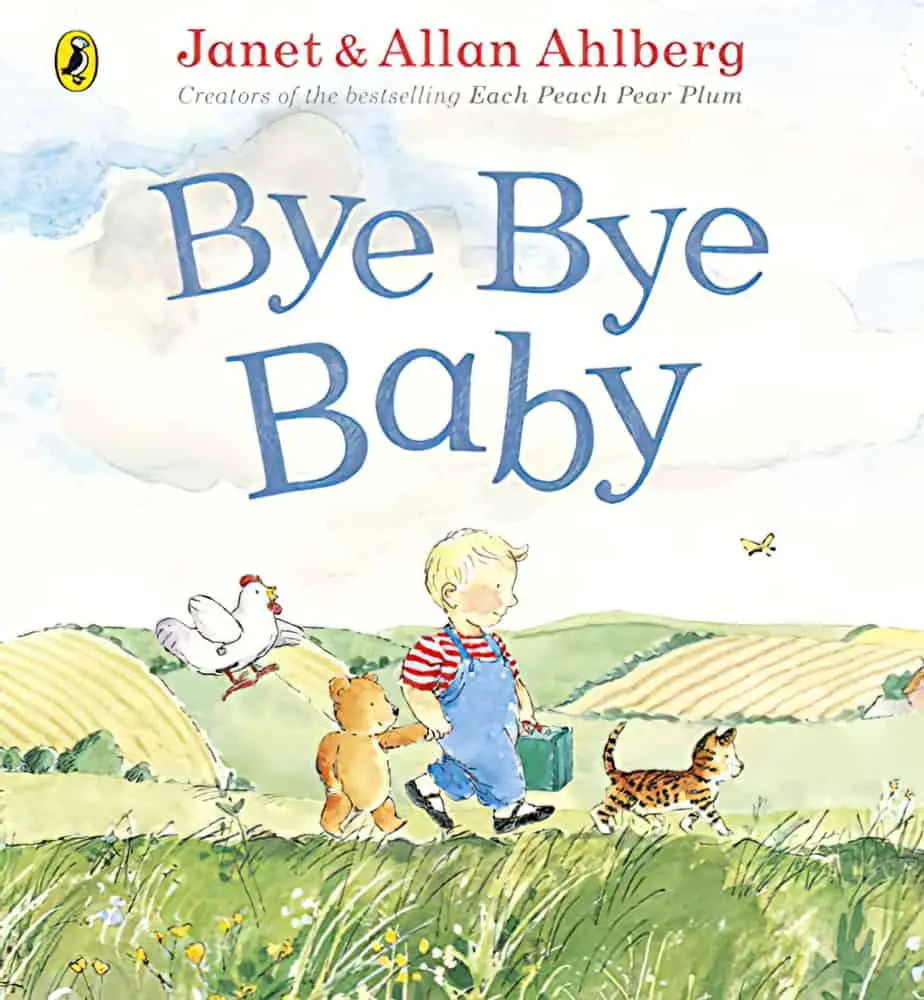
WHO IS THE MAIN CHARACTER?
Baby. Another orphan. There is a loooooong tradition of orphans in American children’s literature in particular.
There was once a baby who had no mummy. This baby lived in a house all by himself. He fed himself and bathed himself. He even changed his own nappy.
It was very sad.
Again we are told, “It was very sad.” This is a great example of telling not showing, to comic effect.
What’s wrong with Baby?
If you’re told what the character ‘needs’ that’s a clear sign it goes here.
Then, one night, when the baby was putting himself to bed, he thought, “I am too young to be doing this. I need a mummy!”
The baby is presented to us as very unfortunate, but we don’t really feel it. If you’re writing a story and you want the readers to feel sad about missing parents, you have to show the parents in action before getting rid of them. But when children are already orphaned at the beginning of a story, we may feel a bit sorry for them, but we don’t feel great sadness. We’re not supposed to feel great sadness until later in the story.
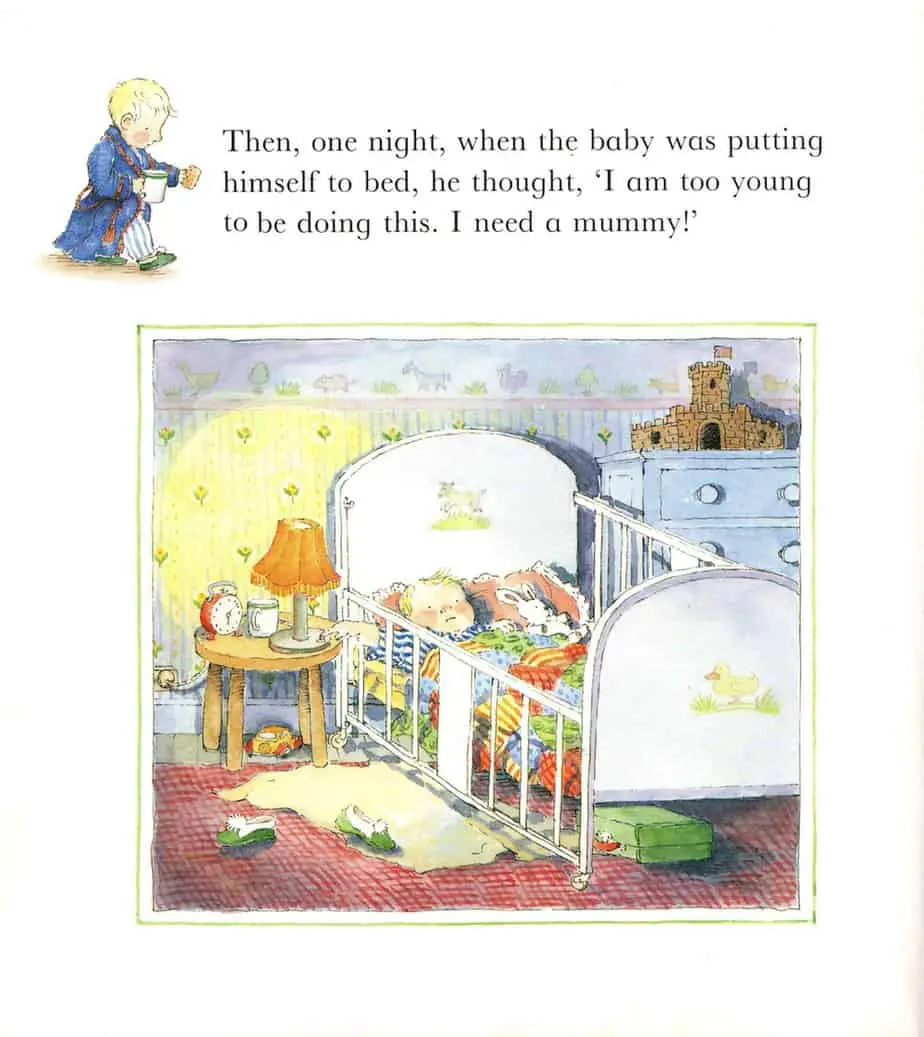
Baby is actually pretty amazing. There’s something gleefully carnivalesque about seeing a baby do things for himself. The humour is ‘dog wears a hat’ brand of joke — babies in real life do not turn off their own alarm clocks and whatnot, so young readers will get a lot of pleasure out of that. I’m sure it’s empowering.
He’s still a baby, but.
The baby could not walk far without resting. He could not walk fast without falling over. But he kept going all the same.
WHAT DOES BABY WANT?
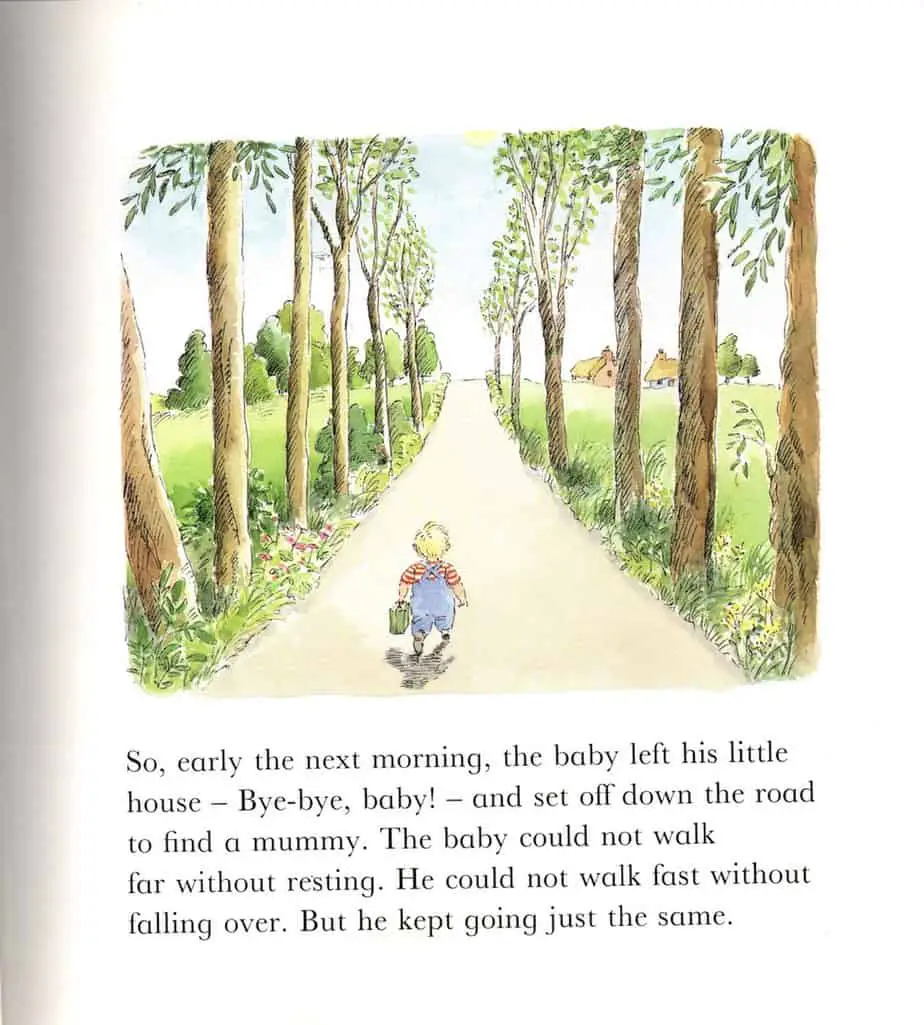
Baby wants to find his mummy, but actually any decent adults in want of a child will do. (There’s no mention of the father.)
This is very fairytale. In stories like Thumbelina and Melon Princess (from Japan), old people who long for children end up with children somehow or other. This story is told from the point of view of the child rather than starting with the old, childless person.
OPPONENT/MONSTER/BADDIE/ENEMY/FRENEMY
The characters Baby meets along the way are not baddies or monsters or villains, but they are in opposition to Baby because none of them are able to be his mummy.
Note that along his journey, Baby also meets a helper. The Old Uncle who will help him find his mummy.
WHAT’S BABY’S PLAN?
Baby asks everyone he meets on his journey if they are his mother, or if they wouldn’t mind functioning as such.
BIG STRUGGLE
The baby trips over and bumps his nose. Teddy does the same. They fall on the old hen.
Eventually he yells “I want my mummy!”
This is the Big Battle scene.
He says it again (in massive font) in a full-bleed double spread.
Making use of pathetic fallacy, it is even raining as baby cries his eyes out.
The tantrum is the Big Battle. Another picture book which makes use of a tantrum as a Big Battle is Z is for Moose.
WHAT DOES BABY LEARN?
It’s the narrative voice which appeals to me about this story, which is an otherwise run-of-the-mill journey into the big, wide world, written with classic mythic structure. The baby goes in search of parents. ‘By coincidence’ he runs into a woman who doesn’t have a baby, though she’s pushing an empty pram. ‘By coincidence’, baby meets a man who agrees readily to be his father.
The baby learns that even when your life is very sad, there can be a happy ending. This point is underscored with the story-within-a-story (a mise en abyme technique) in which the mummy reads Baby a sad story with a happy ending.
HOW WILL BABY’S LIFE BE DIFFERENT FROM NOW ON?
We can extrapolate that Baby will be happy from now on, living with the random woman he met on the street and the man who decided would step up as his father.
Just don’t start getting all weird about it and ask how the mother feels about some rando baby choosing her co-parent for her. Or why she was pushing an empty pram in the first place.
No, don’t do that. Let us accept this brand of weirdness, and the strong cultural prioritising of heterosexual coupledom. (This is a picture book from 1989.)
SEE ALSO
Babies going off on adventures or doing things that only older humans can do is inherently funny. Talking animals are also funny, though we’ve seen so many more of them they’re basically run of the mill now.
Rose Cecil O’Neill, inventor of the Kewpies was America’s most famous commercial illustrator for part of last century. She used the same humour.
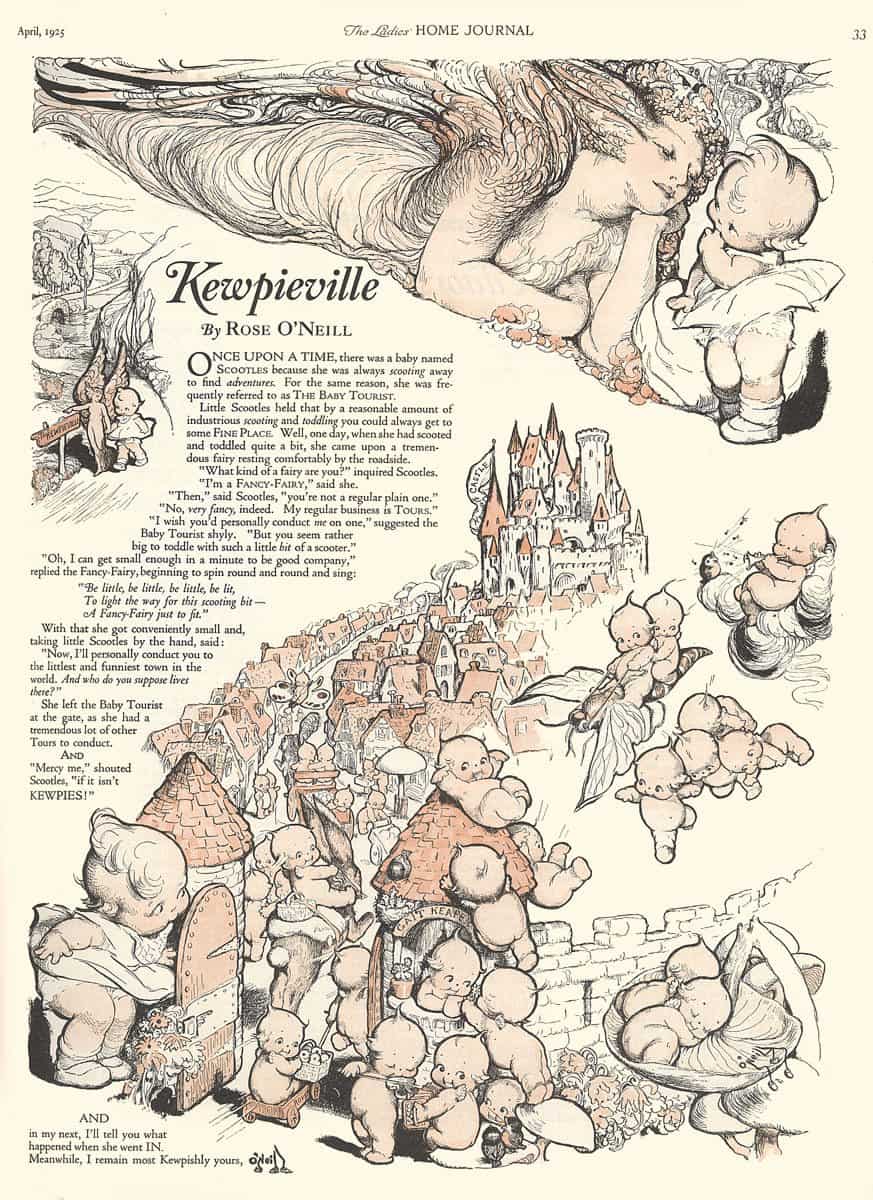
Below is another illustration by Rose O’Neill, the highest paid female illustrator of her era.
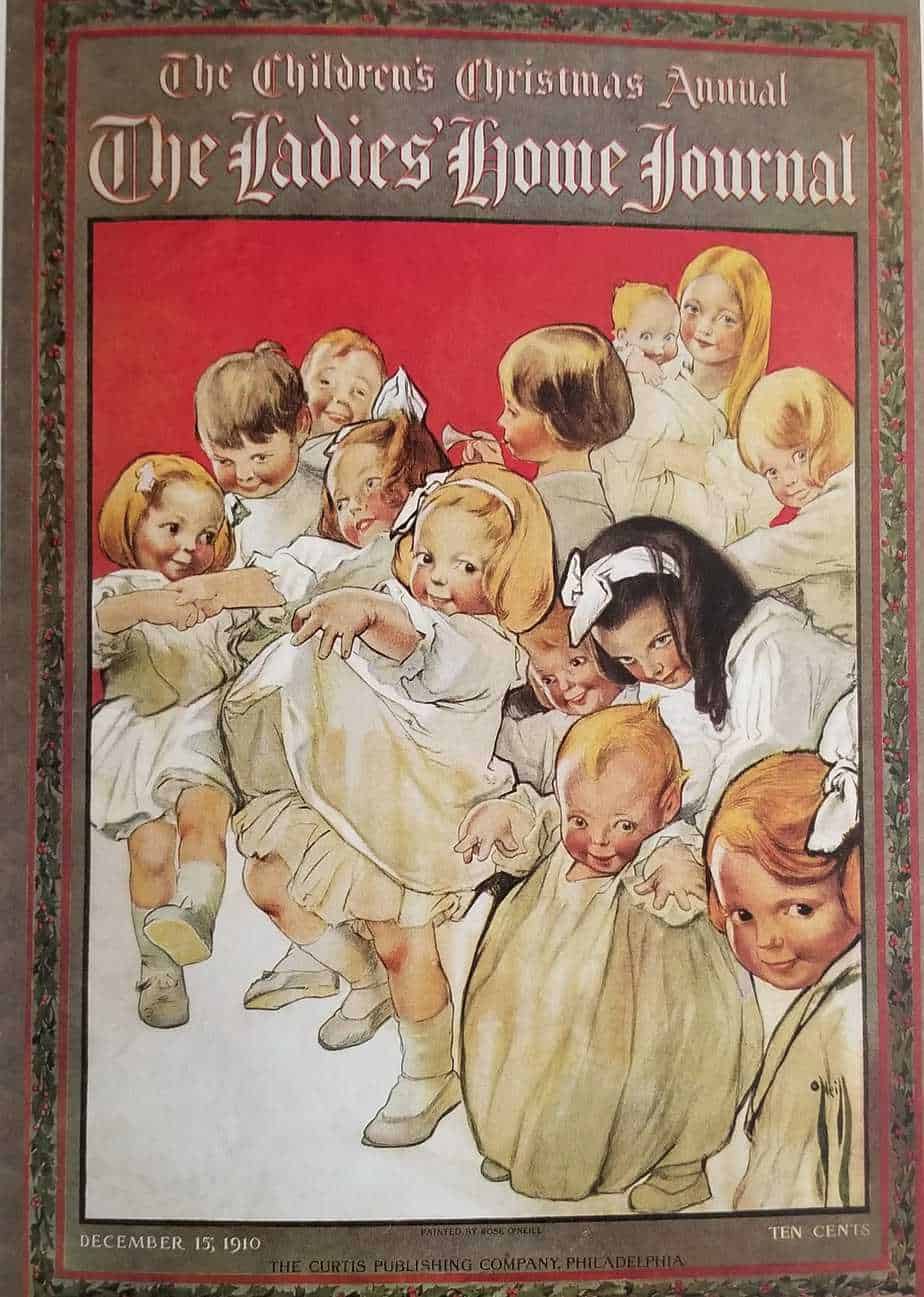
More recently Marla Frazee created Boss Baby, which is also funny for its hat on the dog, babies as adults kind of way.
